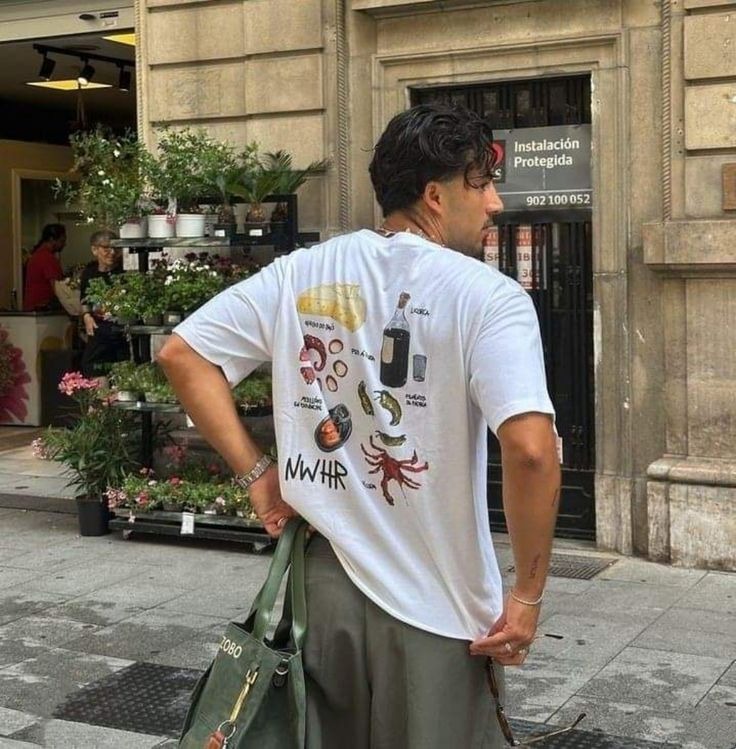The Evolution and Significance of T-Shirt in Fashion

Introduction
T-shirts are one of the most versatile and widely worn garments in the world. They are simple, comfortable, and suitable for various occasions, making them a staple in almost every wardrobe. Over the decades, T-shirts have evolved from being an undergarment to a powerful medium of self-expression, branding, and fashion statements. This article explores the history, evolution, types, cultural significance, and modern trends of T-shirts, emphasizing their importance in the fashion industry.
The History of T-Shirts
T-shirts have a relatively recent history compared to other clothing items. Their origins date back to the late 19th century when they were introduced as an undergarment for the U.S. Navy. These early versions were plain white, made of lightweight cotton, and featured a simple, short-sleeve design. They were initially designed for practicality, allowing sailors to work comfortably in warm conditions.
By the 1920s, the term “T-shirt” became widely recognized in the United States. It wasn’t until the 1950s that T-shirts became a mainstream fashion item, thanks to Hollywood icons like Marlon Brando and James Dean. These actors popularized the T-shirt as outerwear, shifting its status from a basic undergarment to a fashion statement.
The Evolution of T-Shirts in Fashion
Over the decades, T-shirts have transformed from plain and functional to diverse and stylish. The 1960s and 1970s saw the rise of graphic T-shirts, used to express political messages, slogans, and artistic designs. Bands, activists, and brands began utilizing T-shirts as a marketing tool, making them a powerful medium for communication.
The 1980s and 1990s saw an explosion in T-shirt fashion, with oversized styles, tie-dye patterns, and brand logos dominating the market. Streetwear culture played a significant role in elevating T-shirts to a new level, incorporating them into hip-hop, skateboarding, and punk fashion scenes.
Today, T-shirts are a multi-billion dollar industry, with countless variations in fabric, design, and style. From luxury brands like Gucci and Balenciaga to fast-fashion retailers like H&M and Zara, T-shirts are a must-have item across all price ranges.
Types of T-Shirts
There are numerous types of T-shirts available, catering to different tastes and preferences. Some of the most popular styles include:
1. Crew Neck T-Shirts
This is the most common type of T-shirt, featuring a round neckline that sits close to the base of the neck. Crew neck T-shirts are versatile and suitable for casual and semi-formal occasions.
2. V-Neck T-Shirts
V-neck T-shirts have a neckline that forms a “V” shape, offering a slightly more stylish and modern look. They are often preferred for layering under jackets and blazers.
3. Polo T-Shirts
Polo T-shirts feature a collar and a few buttons at the top, providing a more refined and sporty appearance. They are commonly worn in semi-formal settings and are a staple in sports like tennis and golf.
4. Henley T-Shirts
Henley T-shirts are a blend of crew neck and polo shirts, featuring a round neckline with a short button placket. They offer a rugged yet sophisticated look, making them popular among men.
5. Graphic T-Shirts
Graphic T-shirts feature printed designs, logos, slogans, or artwork. They allow wearers to express their personality, support causes, or showcase their favorite bands, movies, or brands.
6. Long-Sleeve T-Shirts
As the name suggests, these T-shirts have long sleeves, making them ideal for cooler weather. They are available in various styles, including fitted and oversized.
7. Oversized T-Shirts
Oversized T-shirts have gained immense popularity in recent years, especially in streetwear fashion. They provide a relaxed and comfortable fit and are often worn as a statement piece.
The Cultural Significance of T-Shirts
T-shirts have played a significant role in pop culture, activism, and branding. They serve as a blank canvas for creativity, allowing individuals and organizations to convey messages, trends, and emotions.
1. T-Shirts as a Medium of Self-Expression
People use T-shirts to showcase their interests, beliefs, and affiliations. Whether it’s a political slogan, a humorous quote, or a representation of a favorite band, T-shirts allow individuals to communicate their identity without saying a word.
2. T-Shirts in Activism and Movements
Throughout history, T-shirts have been used to spread awareness and support causes. From anti-war protests in the 1960s to modern-day social justice movements, printed T-shirts help advocate for change and unity.
3. T-Shirts in Branding and Marketing
Businesses and brands leverage T-shirts as a powerful marketing tool. Custom T-shirts with company logos, promotional messages, and creative designs help establish brand identity and increase visibility.
T-Shirts in Modern Fashion Trends
In today’s fashion landscape, T-shirts continue to be a dominant force. Some key trends include:
1. Sustainable and Eco-Friendly T-Shirts
With growing awareness of environmental issues, sustainable fashion has become a priority. Many brands now produce T-shirts using organic cotton, recycled materials, and ethical manufacturing practices.
2. Minimalist and Monochrome Designs
Simple, solid-colored T-shirts have gained popularity, offering a clean and timeless aesthetic. These minimalist designs pair well with various outfits and suit different occasions.
3. Streetwear Influence
Streetwear brands like Supreme, Off-White, and Fear of God have redefined T-shirt fashion. Oversized fits, bold graphics, and limited-edition drops make T-shirts highly sought after in the streetwear community.
4. Custom and Personalized T-Shirts
Custom T-shirts allow individuals to create unique designs that reflect their personality. With online platforms offering easy customization, personalized T-shirts have become a trend in casual wear and business branding.
Conclusion
T-shirts have come a long way from their humble beginnings as an undergarment to becoming a global fashion phenomenon. Their versatility, affordability, and ability to convey messages make them an essential part of modern wardrobes. Whether as a form of self-expression, a branding tool, or a fashion statement, T-shirts continue to evolve and shape the way we dress. As sustainability and customization trends continue to grow, the future of T-shirts in fashion remains as exciting as ever.
